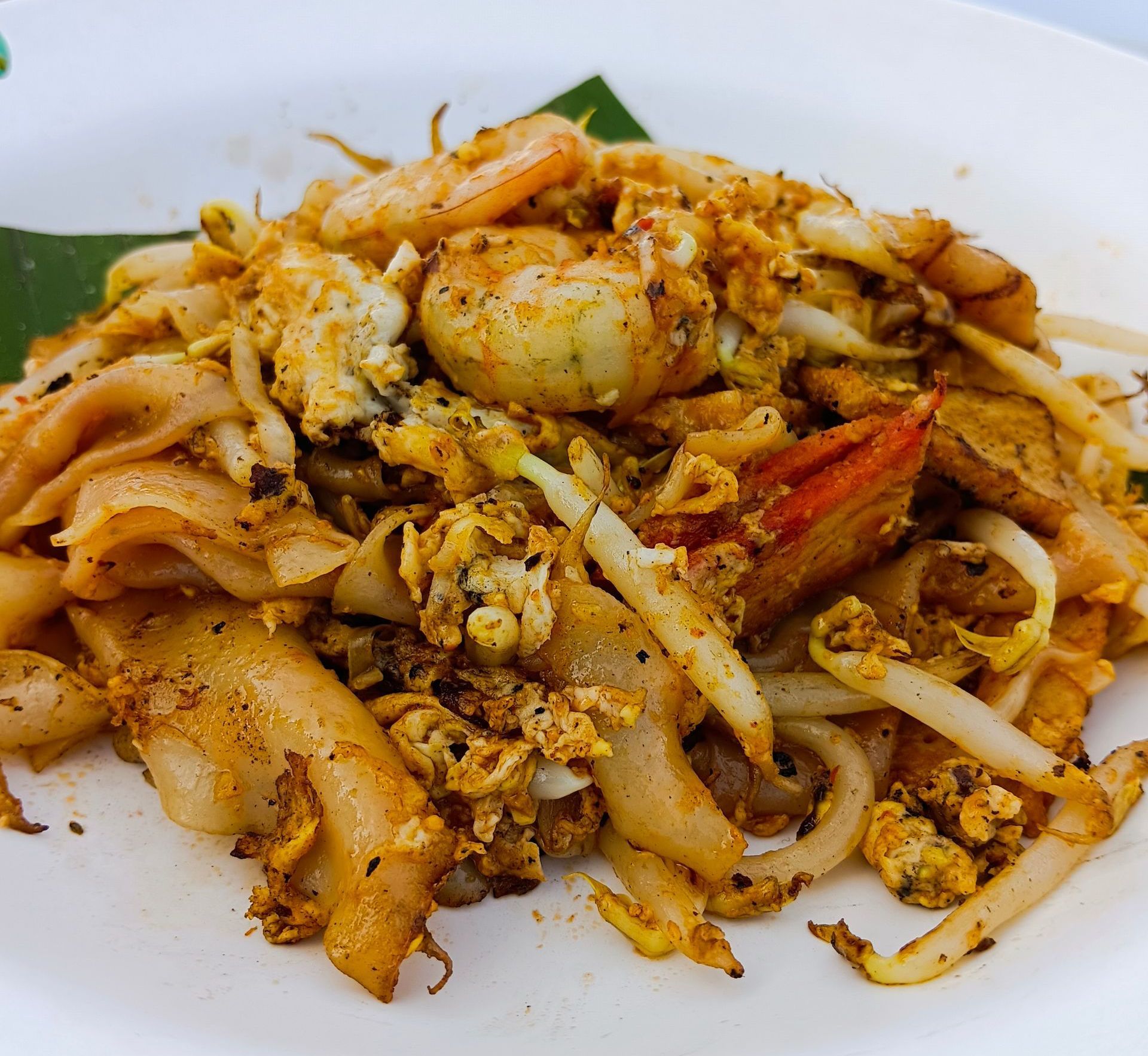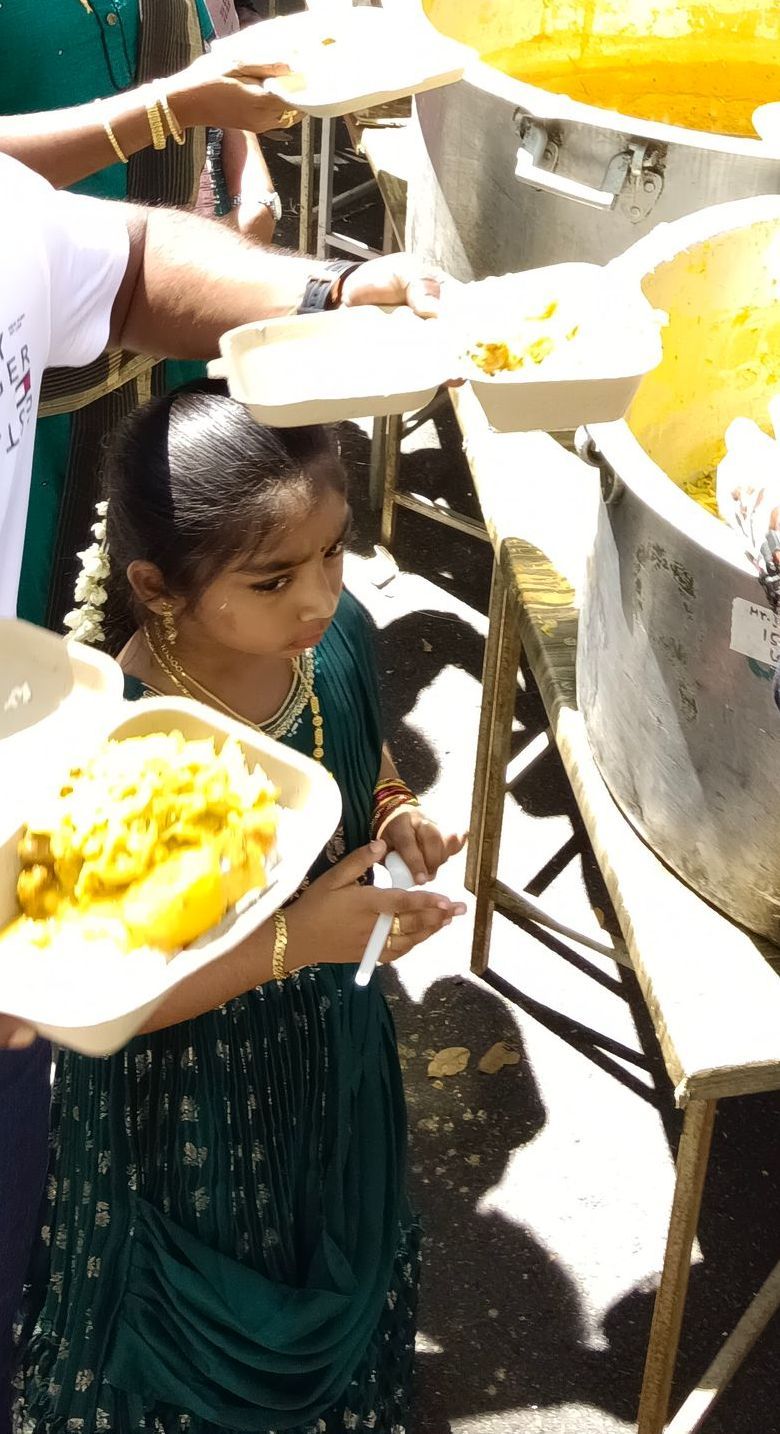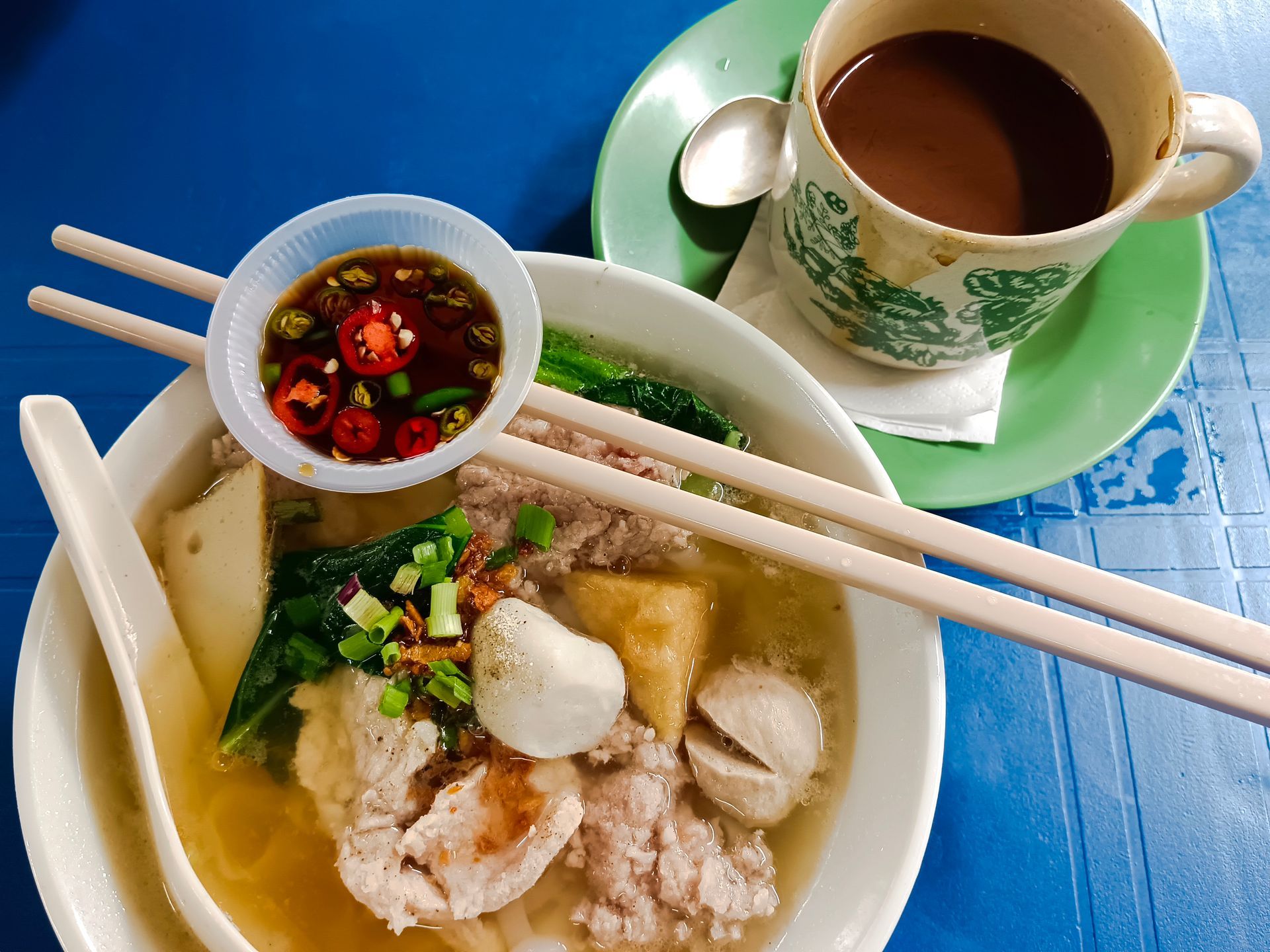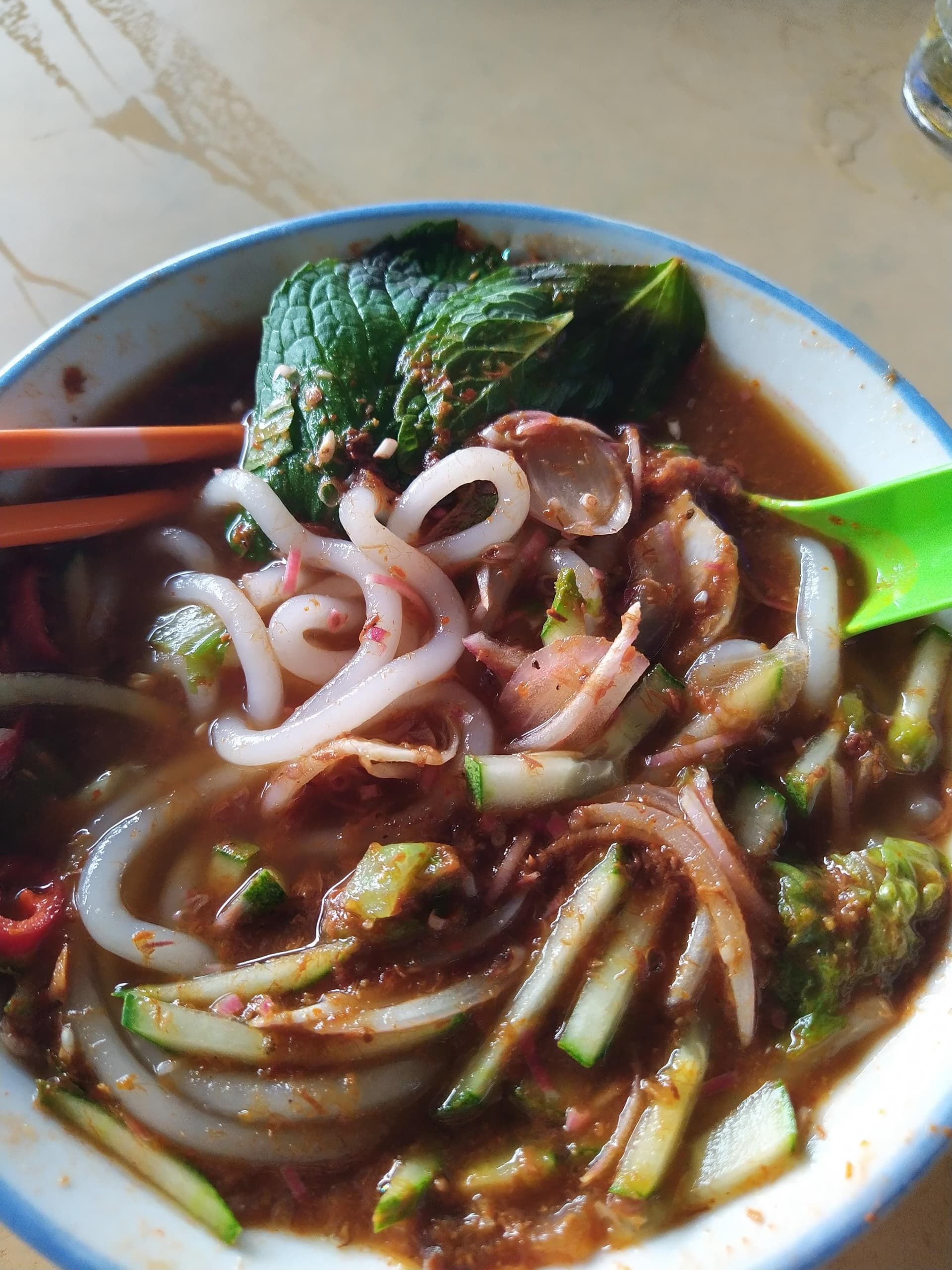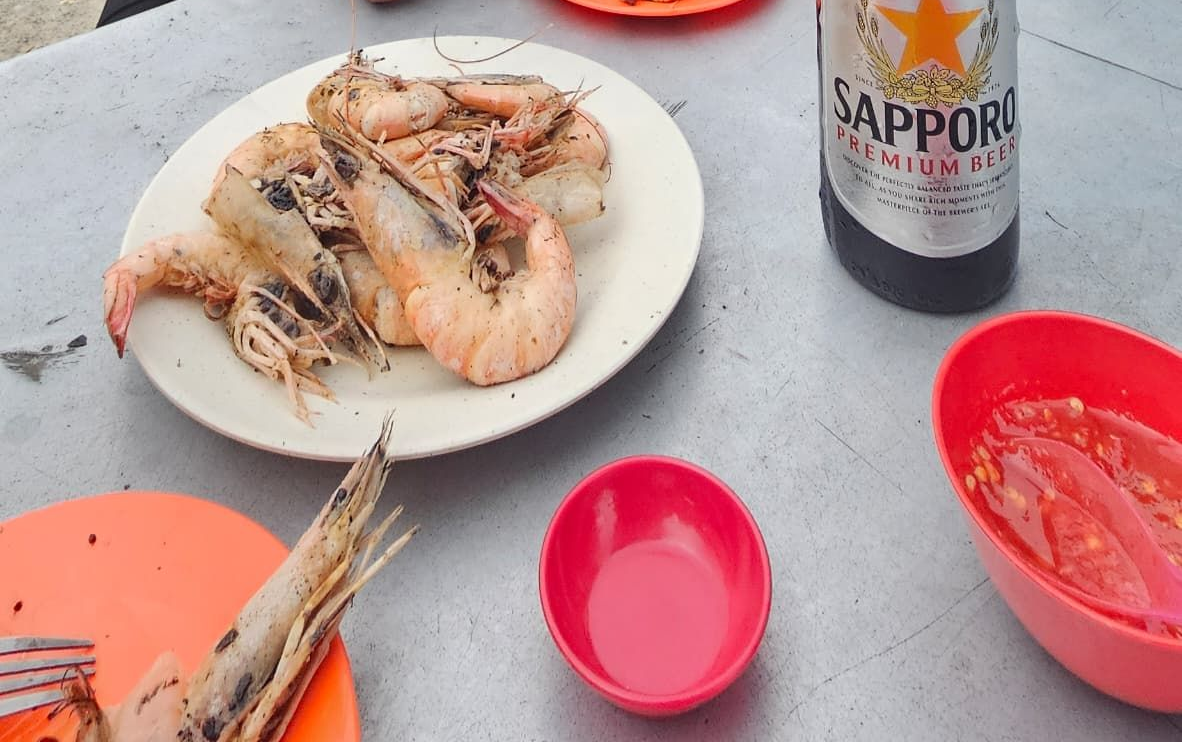Roti Canai – Malaysia’s Flaky, Irresistible Flatbread
If Char Koay Teow is smoky and bold, and Asam Laksa is tangy and soul-stirring, then Roti Canai is the comfort food that feels like a warm handshake at any mamak stall. Flaky on the outside, soft inside, and usually eaten with dhal curry or spicy sambal, it’s Malaysia’s go-to breakfast — though in some places you’ll also find it served late into the night.
A Dish with a Story
Roti Canai came to Malaysia with Indian Muslim migrants and has since become one of the country’s most beloved foods. The word canai comes from the Malay verb “to flatten or stretch”, describing the dramatic way roti makers spin and flip the dough until it’s paper thin before folding and frying it.
Every Malaysian has a roti canai memory — whether it’s early-morning breakfasts before school, or late-night suppers with friends at the local mamak stall.
When to Find It
Unlike Penang’s wok-fried noodles available all day, roti canai often has specific hours. Many stalls serve it only in the mornings with hot teh tarik, while some mamak restaurants fire up the griddle again in the evenings. If you’re craving it mid-afternoon, you might be out of luck — so timing is part of the experience.
Simple Roti Canai Recipe (Home Version)
Ingredients:
- 3 cups all-purpose flour
- 1 tsp salt
- 1 tsp sugar
- 2 tbsp condensed milk (or regular milk)
- 3 tbsp ghee or oil
- 1 cup water (adjust as needed)
- Extra oil for soaking the dough
Method:
- Mix the dough: Combine flour, salt, sugar, milk, and ghee. Slowly add water and knead until smooth and elastic.
- Rest overnight: Divide into balls, coat with oil, and let rest at least 6 hours (overnight is best). This gives that stretchy texture.
- Stretch and flip: Oil your work surface, then stretch each dough ball until paper thin. Fold edges inward to form a square or coil it into a circle.
- Fry: Cook on a hot, lightly oiled griddle until golden brown and crispy on both sides.
- Serve: Tear into pieces (never cut with a knife — use your hands!) and dip into dhal curry, chicken curry, or sambal.
✨ Pro tip: The secret is in the overnight resting. That’s what gives roti canai its signature chewiness and flaky layers.
Beyond the Classic
- Roti Telur – with egg inside.
- Roti Tissue – stretched paper thin, crispy, drizzled with condensed milk.
- Roti Bom – thick, sweet, buttery version.
Whether you’re a purist or an adventurer, there’s a roti for everyone.
